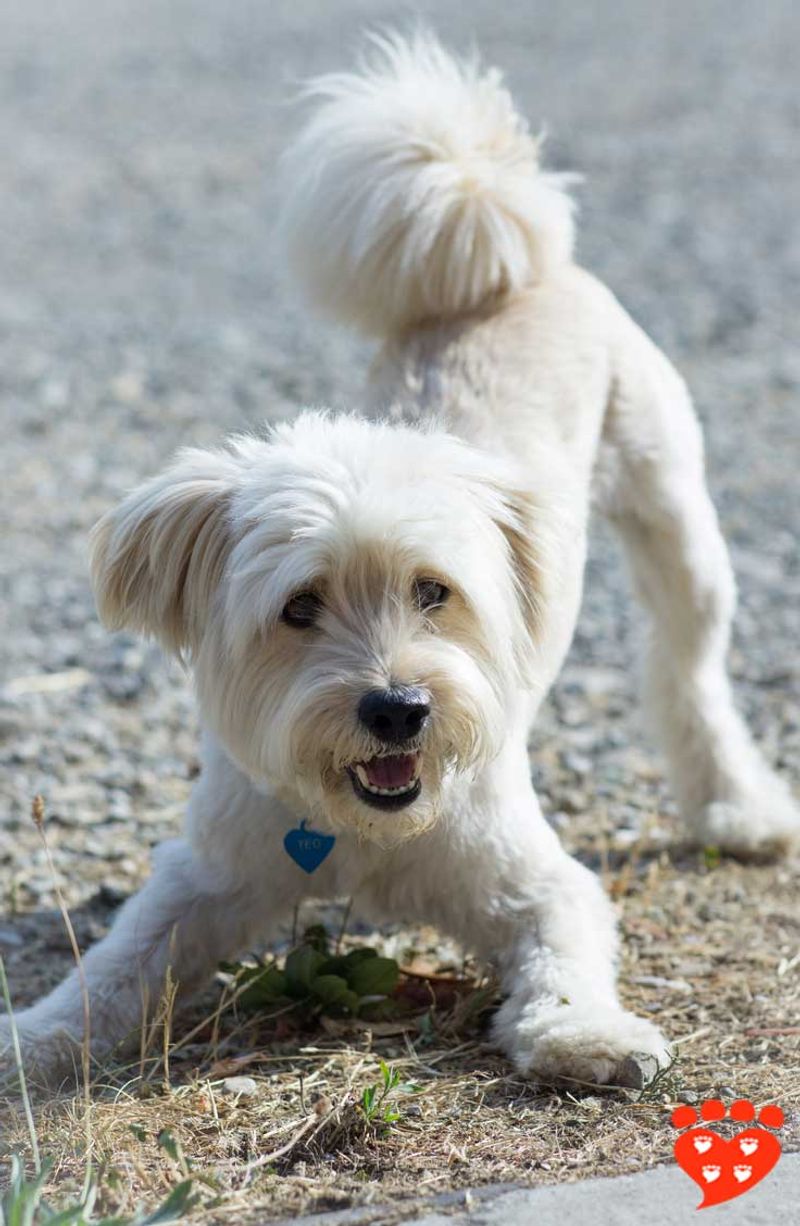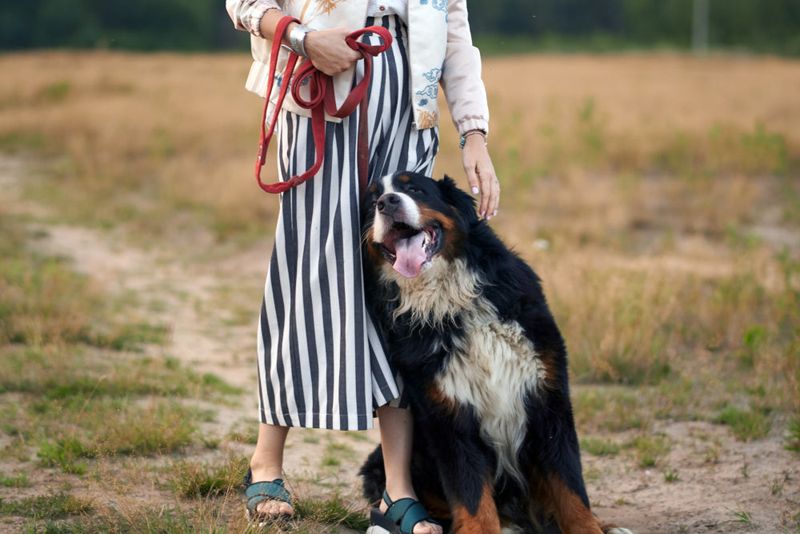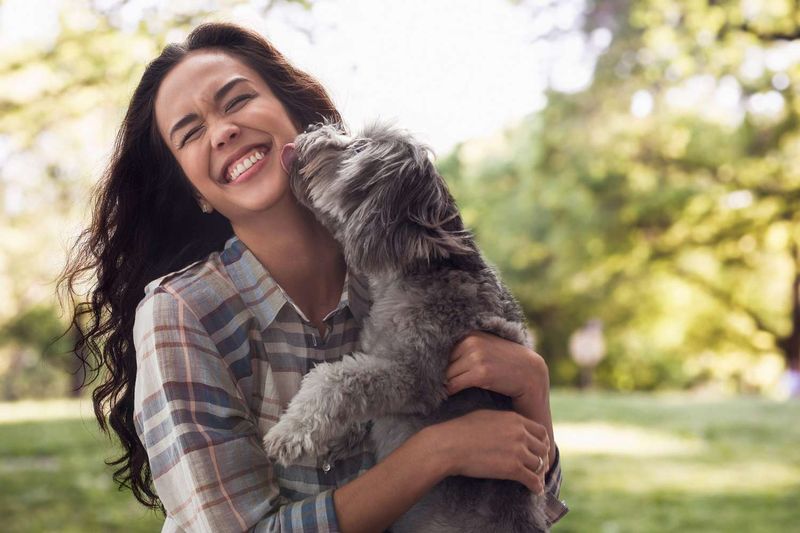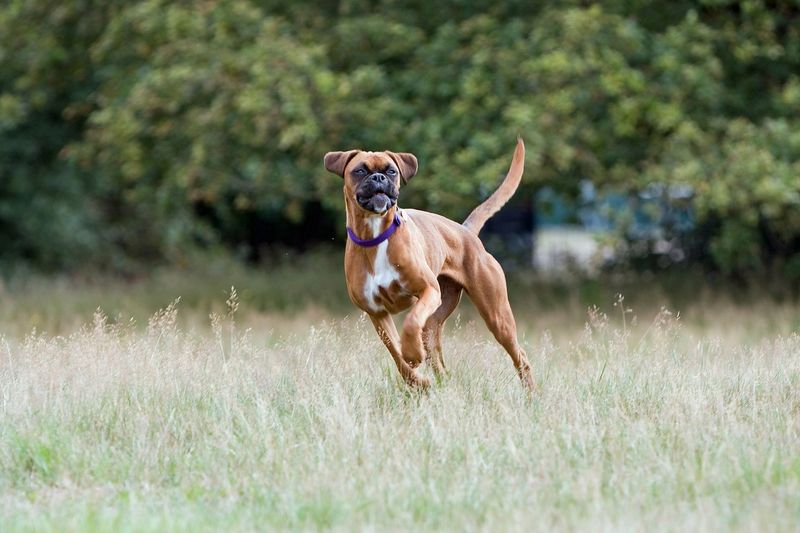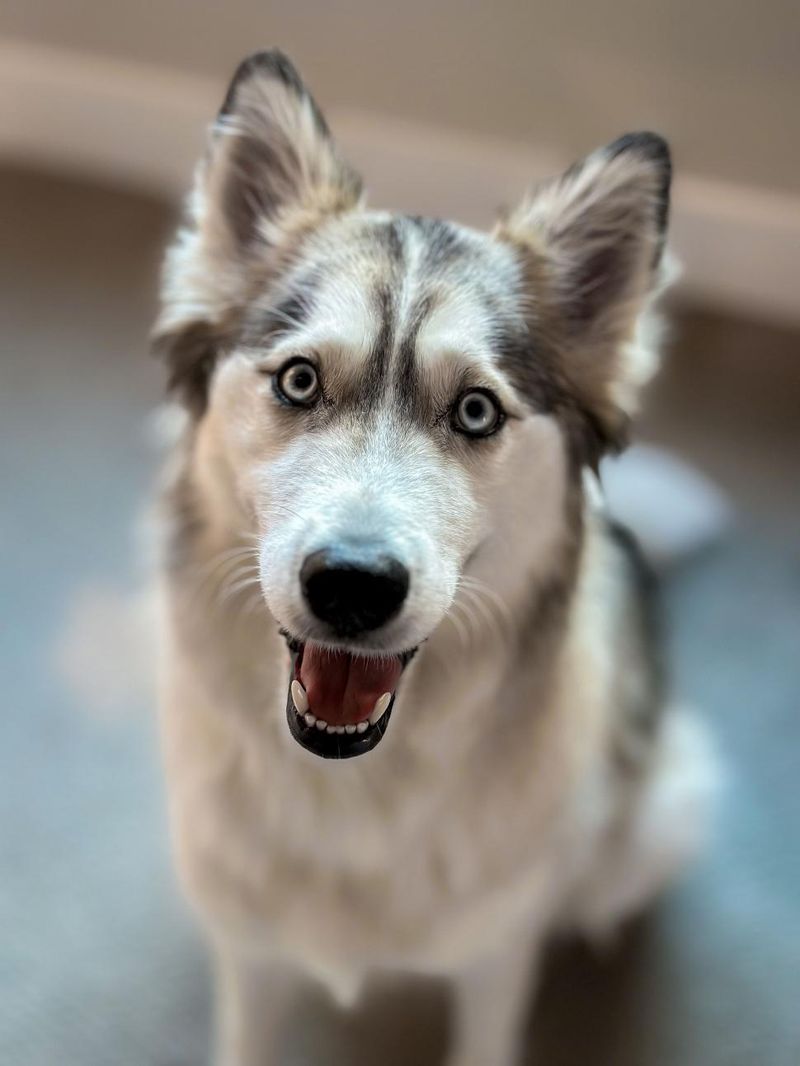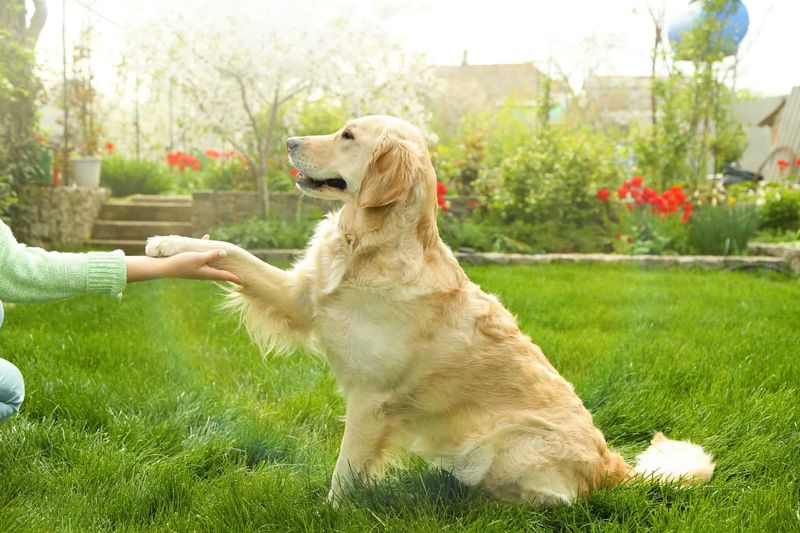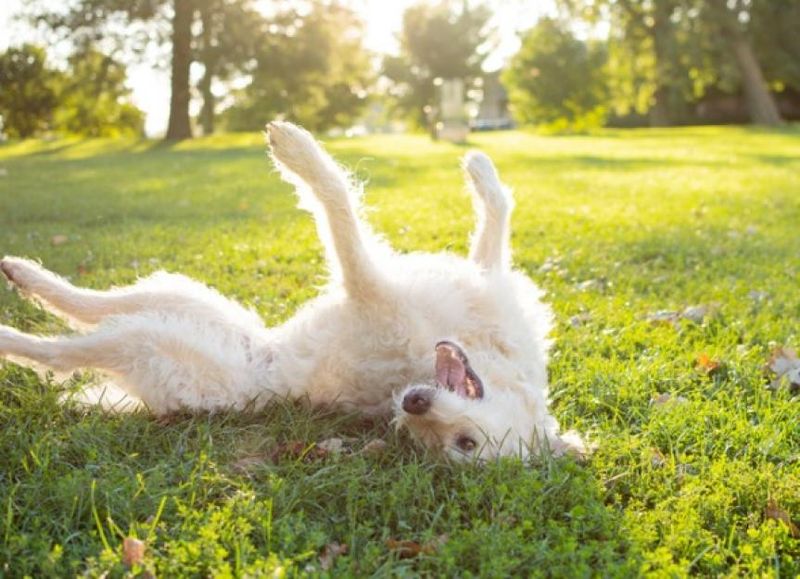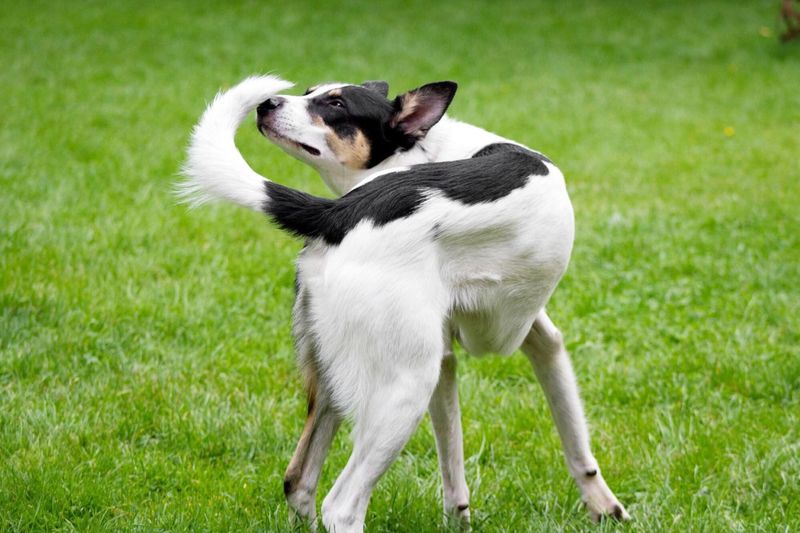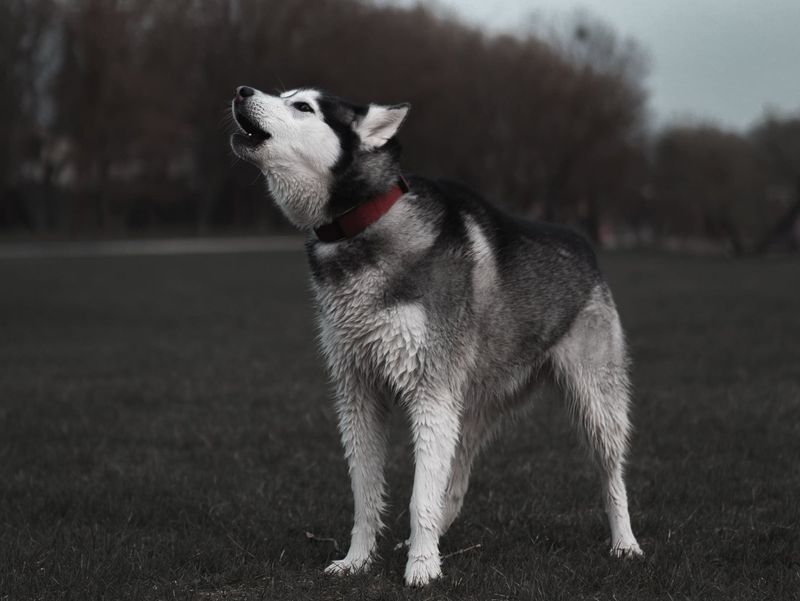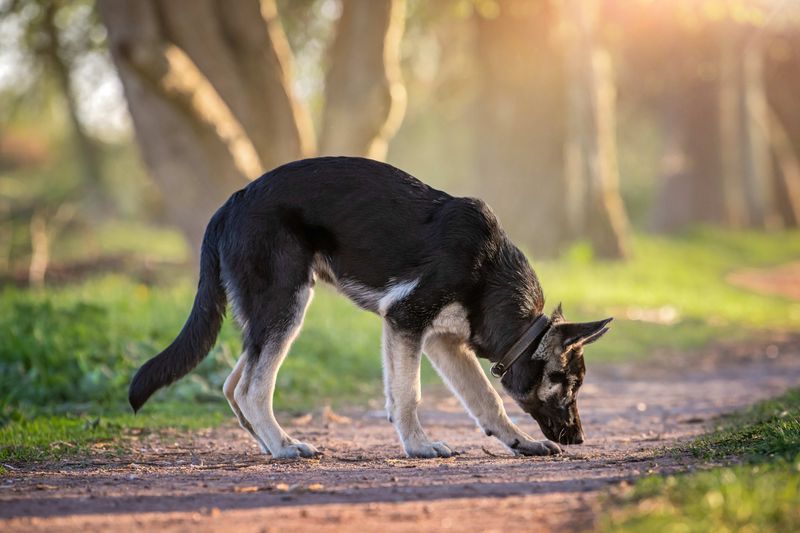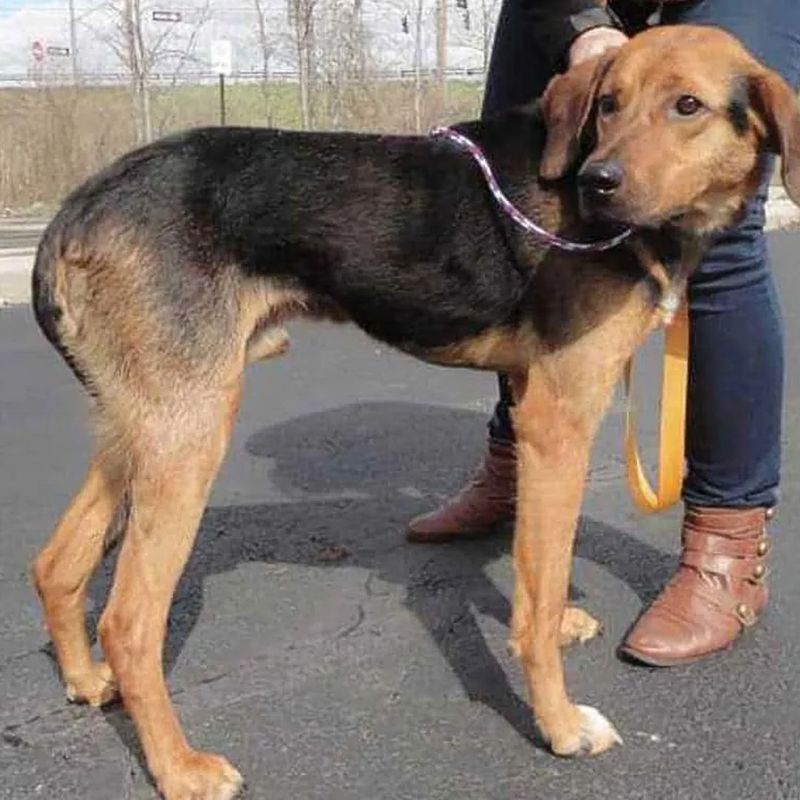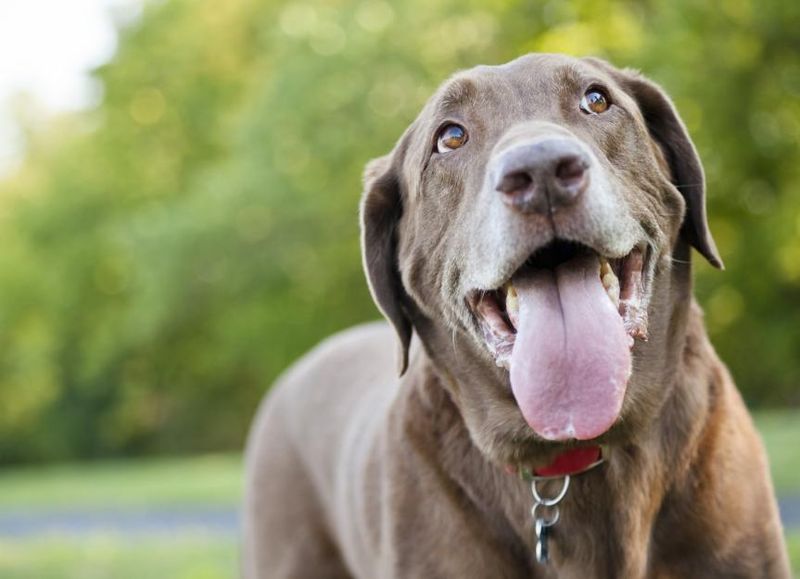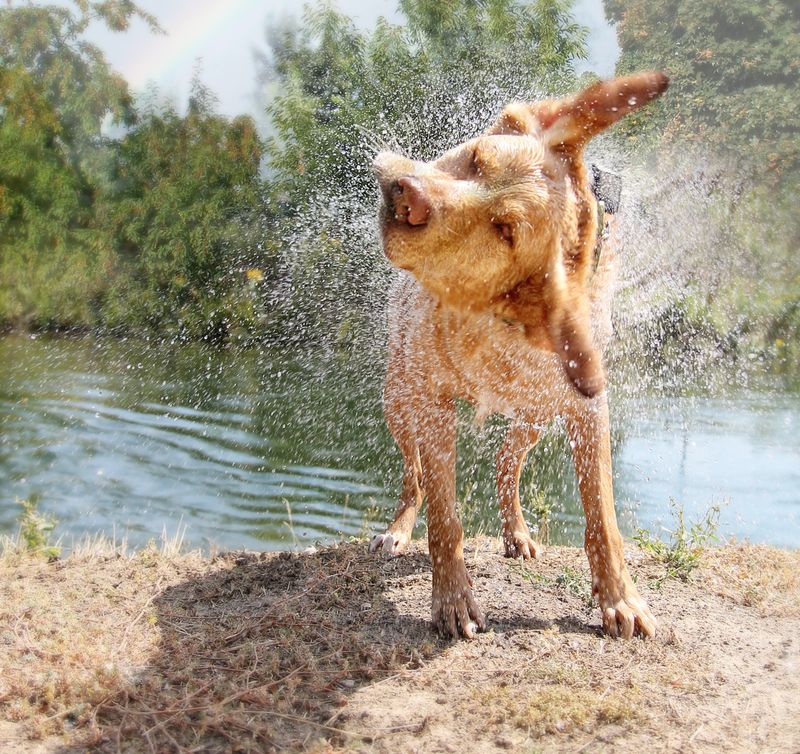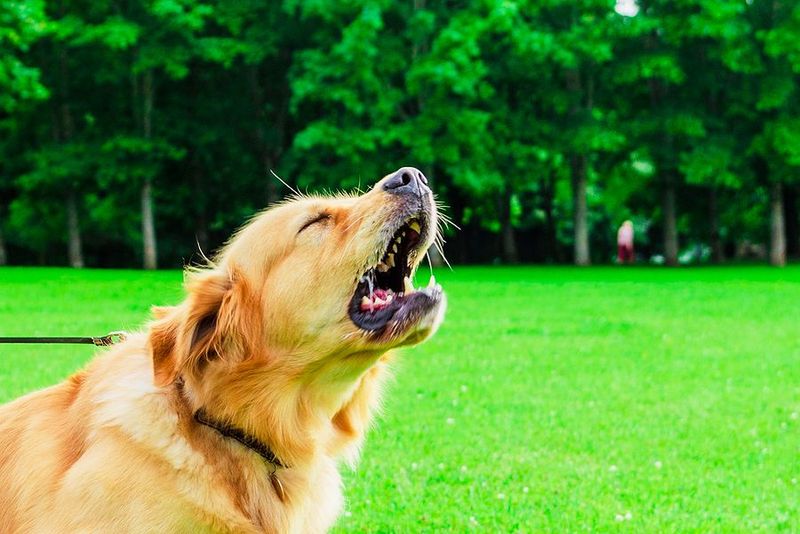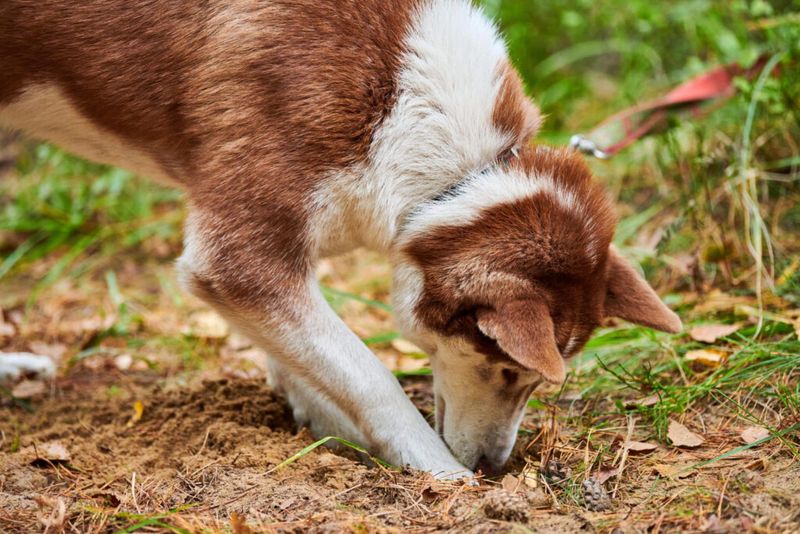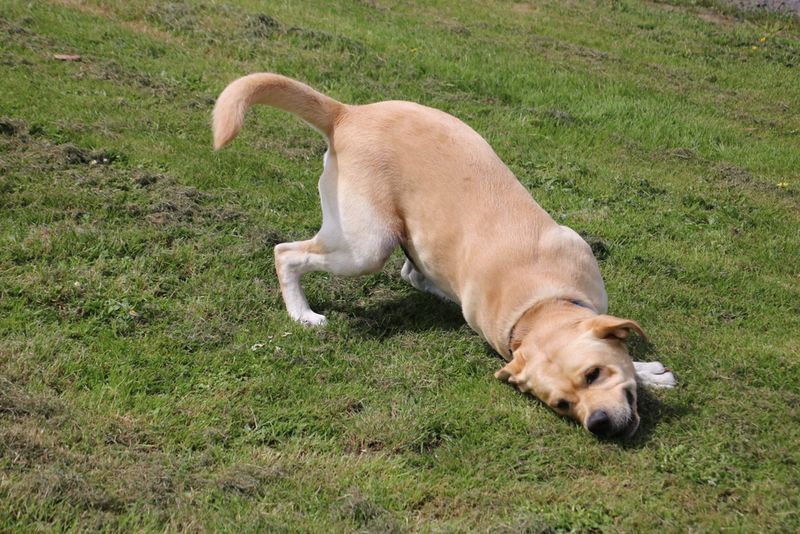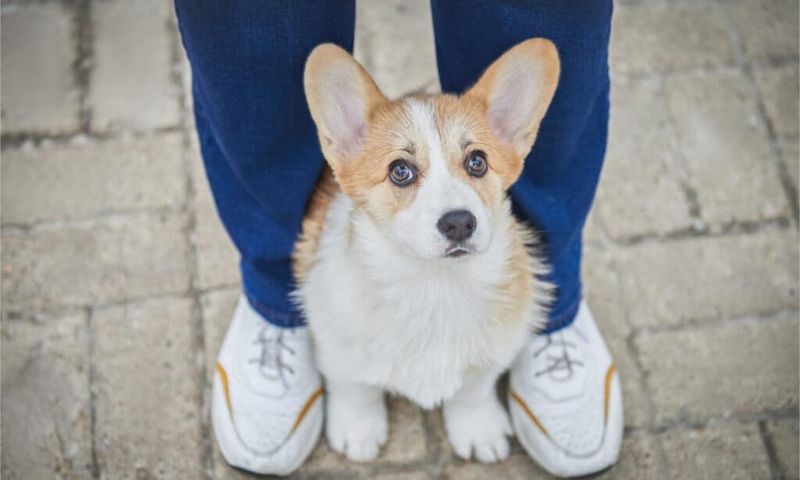Dogs are incredibly expressive creatures, using various non-verbal cues to communicate their feelings. From wagging tails to soulful eyes, they have a unique way of showing affection, excitement, and even concern. Understanding these signals can enhance the bond between humans and these loyal companions.
Puppy Eyes
Who could resist those big, round eyes? Dogs use their eyes to communicate a range of emotions. When a dog looks at you with wide, soft eyes, they’re often trying to show trust or affection. It’s a look that can melt hearts, as many owners know all too well.
This expression is a powerful tool in a dog’s emotional arsenal. It’s their way of saying, “I love you,” or “Can you pet me more?” This mutual gaze can actually increase oxytocin levels in both dogs and humans, strengthening their bond.
Bowing Head
A dog’s head bow, often referred to as the play bow, is an invitation to interact and have fun. This posture, where they lower their front legs while keeping their rear end up, signals a readiness to engage in playful activities.
The play bow is a universal sign among dogs and is instantly recognizable. It’s their way of saying, “Let’s play!” or “Come join me in some fun.” This gesture fosters social interaction and is a delightful part of their behavioral repertoire that every dog owner appreciates.
Leaning In
When a dog leans into you, it’s a clear sign of affection and trust. This behavior indicates that they see you as a source of comfort and safety. Leaning is a way for dogs to feel close and connected to their human companions.
This simple gesture speaks volumes about your relationship with your pet. It’s their way of seeking reassurance or simply enjoying your presence. Dogs are masters at expressing subtle sentiments, and leaning is one of those understated yet profound displays of love.
Licking You
Licking can mean many things, from affection to grooming. When a dog licks you, it’s often an expression of love and bonding. This behavior harks back to their early days when mother dogs lick their puppies to clean and nurture them.
For dogs, licking is a way of showing care and seeking attention. While some may see it as a simple grooming act, it’s often deeper. Dogs might lick your hand to greet you or your face to comfort you after a long day. It’s an endearing trait that strengthens the human-canine bond.
Wagging Tail
A wagging tail is perhaps the most iconic way dogs express joy. When your furry friend wags its tail, it often means they’re delighted to see you or are enjoying their current activity. Different tail wags can signify various emotions, but a broad, sweeping wag usually indicates happiness.
Interestingly, the speed and direction of the wag also play a role in what your dog is communicating. A high, fast wag might show excitement, while a slow wag with a lowered tail can suggest insecurity. Observing these nuances helps us understand our pets better.
Ears Perked Up
When a dog’s ears perk up, it’s a sign of curiosity or attentiveness. This gesture indicates that they are interested in what’s happening around them and are ready to respond to any cues. Erect ears can also signal excitement.
Different breeds express this in unique ways, but the message is clear: they are engaged and aware. Whether it’s a sound, a movement, or a familiar voice, perked ears show that your dog is tuned in and ready to interact. It’s their non-verbal way of saying, “What’s next?”
Yawning
Yawning in dogs is often contagious just like in humans. While it might indicate tiredness, yawning is also a sign of comfort and relaxation. In social settings, a dog might yawn to show they feel at ease with the people or dogs around them.
Interestingly, dogs also use yawning as a calming signal when they are stressed or anxious. It’s a way to diffuse tension and indicate that they mean no harm. Watching a dog yawn can be a charming reminder of their complex emotional world.
Giving a Paw
Offering a paw is more than just a trick; it’s a sign of trust and willingness to engage. When a dog extends its paw, it can be an invitation for interaction or a request for attention. This gesture is often taught as a command but becomes a natural part of their behavior.
For dogs, giving a paw is a way to connect and communicate. It might mean they want to play or are seeking comfort. This simple act is a heartwarming example of how dogs use their body language to express themselves.
Snuggling Close
When a dog snuggles up to you, it’s a clear sign of affection and a desire for closeness. This behavior indicates they see you as part of their pack and want to bond. Dogs are social animals, and snuggling is their way of showing love and seeking warmth.
Snuggling can also be comforting for dogs, especially during colder months. It’s a way for them to feel secure and loved. This endearing trait is one of the many reasons why dogs make such loyal companions.
Rolling Over
Rolling over is a sign of submission and trust. When a dog shows their belly, they are indicating that they feel safe and secure in your presence. This vulnerable position is a testament to the bond between you and your dog.
In addition to trust, rolling over can also be an invitation to play. Dogs often roll around when they are excited and want to engage in playful activities. This behavior is a joyful expression of their carefree spirit and happiness.
Chasing Tail
Chasing tails is a playful behavior that often signifies excitement and fun. When a dog engages in this activity, it’s usually because they are feeling energetic and full of life. This amusing action can also be a way for dogs to entertain themselves.
While it’s mostly playful, sometimes tail chasing can indicate boredom or anxiety, so it’s important to observe the context. Nonetheless, it’s usually a delightful spectacle that highlights a dog’s playful nature and zest for life.
Howling
Howling is a primal form of communication for dogs. This behavior often signifies a response to certain sounds or an expression of loneliness. When dogs howl, they are connecting with their wild ancestry.
For some breeds, such as Huskies, howling is more common and can also be a form of expression during play or excitement. This vocalization allows dogs to communicate over long distances, conveying emotions or seeking attention from their human companions.
Sniffing Intensely
When a dog sniffs intensely, it’s a sign of curiosity and exploration. Dogs have an exceptional sense of smell, and they use it to gather information about their environment. This behavior is their way of exploring the world, understanding scents, and interpreting the surroundings.
Intense sniffing often means they’ve found something particularly interesting. It’s a natural behavior that reflects their inquisitive nature and strong instincts. This dedication to sniffing is part of what makes dogs such excellent companions for exploration.
Tail Tucked
A tucked tail is a common sign of fear or submission in dogs. When a dog tucks its tail between its legs, it’s expressing insecurity or apprehension. This posture is a defensive response to perceived threats or uncomfortable situations.
Understanding this behavior is crucial for pet owners, as it helps identify when a dog is feeling vulnerable. Responding with reassurance and comfort can help ease their anxiety, strengthening trust and security in their environment.
Panting
Panting is a normal behavior that helps dogs regulate their body temperature. However, it can also indicate excitement or stress. When a dog pants heavily, it’s important to consider the context to understand what they might be feeling.
On warm days, panting is simply a cooling mechanism. But if your dog is panting in a new environment or during a thunderstorm, it might suggest stress or excitement. Observing these cues helps in understanding their emotional state and ensuring their comfort.
Shaking Off
Shaking off isn’t just for when a dog is wet; it’s also a way to release tension or stress. After a stressful encounter or vigorous play, dogs often shake their bodies to relax and reset.
This behavior can also be a social signal, indicating that the dog is ready to move on from a situation. It’s a charming quirk that many dogs display, reflecting their ability to manage their emotional and physical states effectively.
Barking
Barking is one of the most vocal ways dogs express themselves. Whether it’s a warning, a greeting, or an expression of boredom, barking serves multiple communicative purposes. The tone, frequency, and intensity of the bark can provide clues about its meaning.
Understanding the context and the type of bark can help interpret what your dog is trying to say. While some barking is natural, excessive barking might signal a need for attention or stimulation. Recognizing these signals can improve communication with your pet.
Digging
Digging is a natural behavior that can indicate excitement, curiosity, or a desire to create a comfortable resting place. Dogs often dig to explore scents or bury toys, reflecting their ancestral instincts.
While it can be frustrating for garden-loving owners, digging is a sign of a dog’s playful and inquisitive nature. Understanding why your dog is digging can help address their needs, whether it’s more toys, exercise, or a cozy spot to relax.
Rubbing Face
Face rubbing is a playful and sometimes soothing activity for dogs. When they rub their face on the ground or furniture, it can mean they’re trying to alleviate an itch or simply enjoying the texture.
This behavior can also be a way for dogs to spread their scent and mark their territory. It’s a cute and quirky habit that showcases their unique personalities and the joy they find in everyday activities.
Sitting on Your Feet
When a dog sits on your feet, it’s a clear sign of affection and claiming you as part of their pack. This behavior indicates they feel secure and are seeking closeness.
Sitting on feet is often seen as a protective gesture, showing that your dog wants to be near and ensure your presence. This endearing habit highlights the bond between you and your pet, emphasizing their loyalty and affection.


